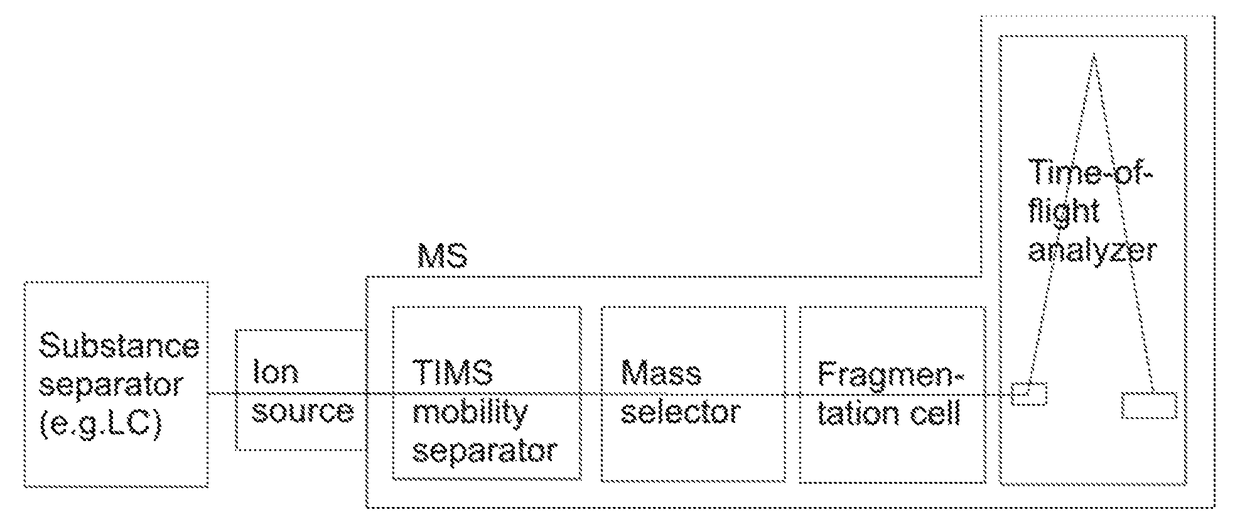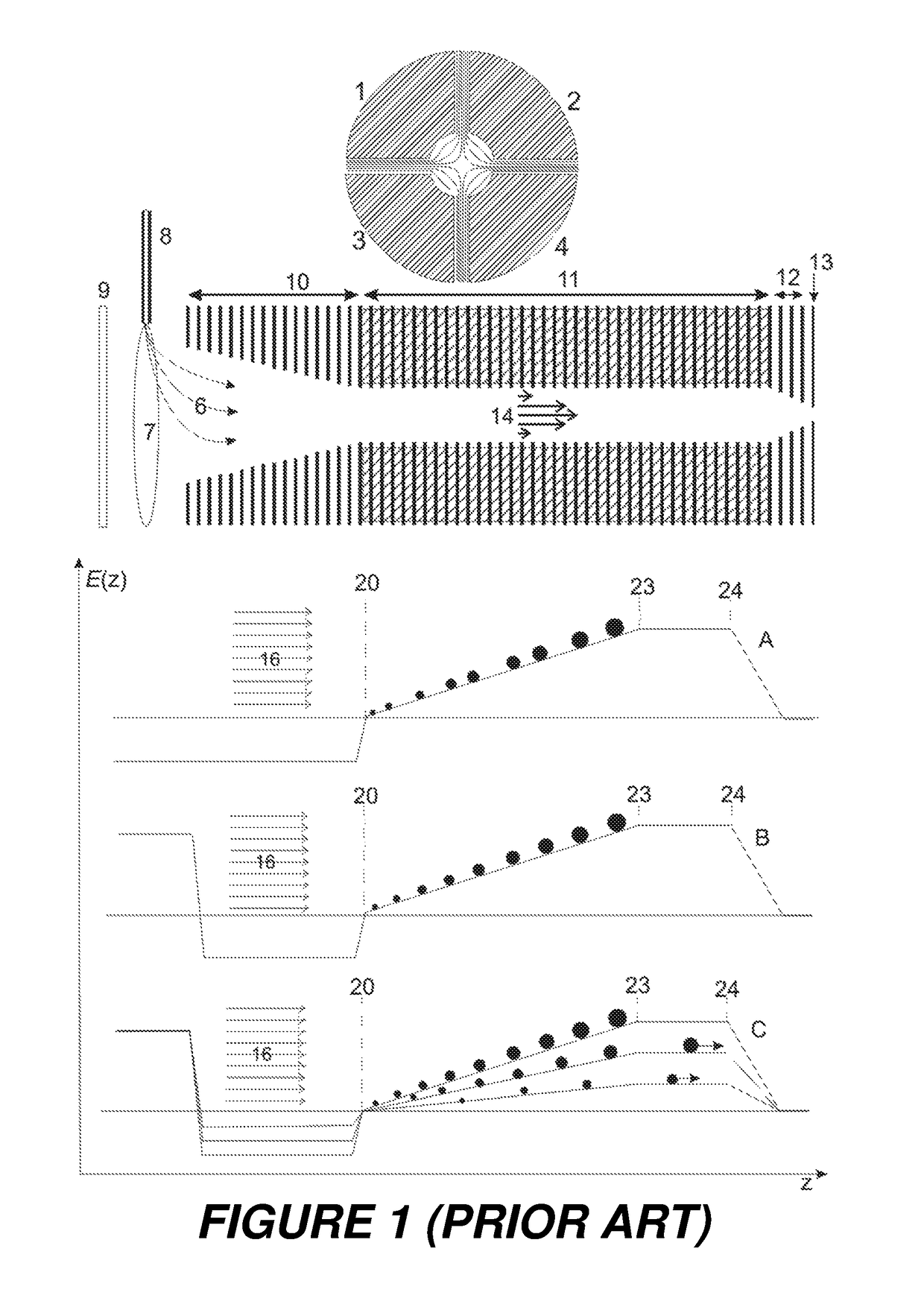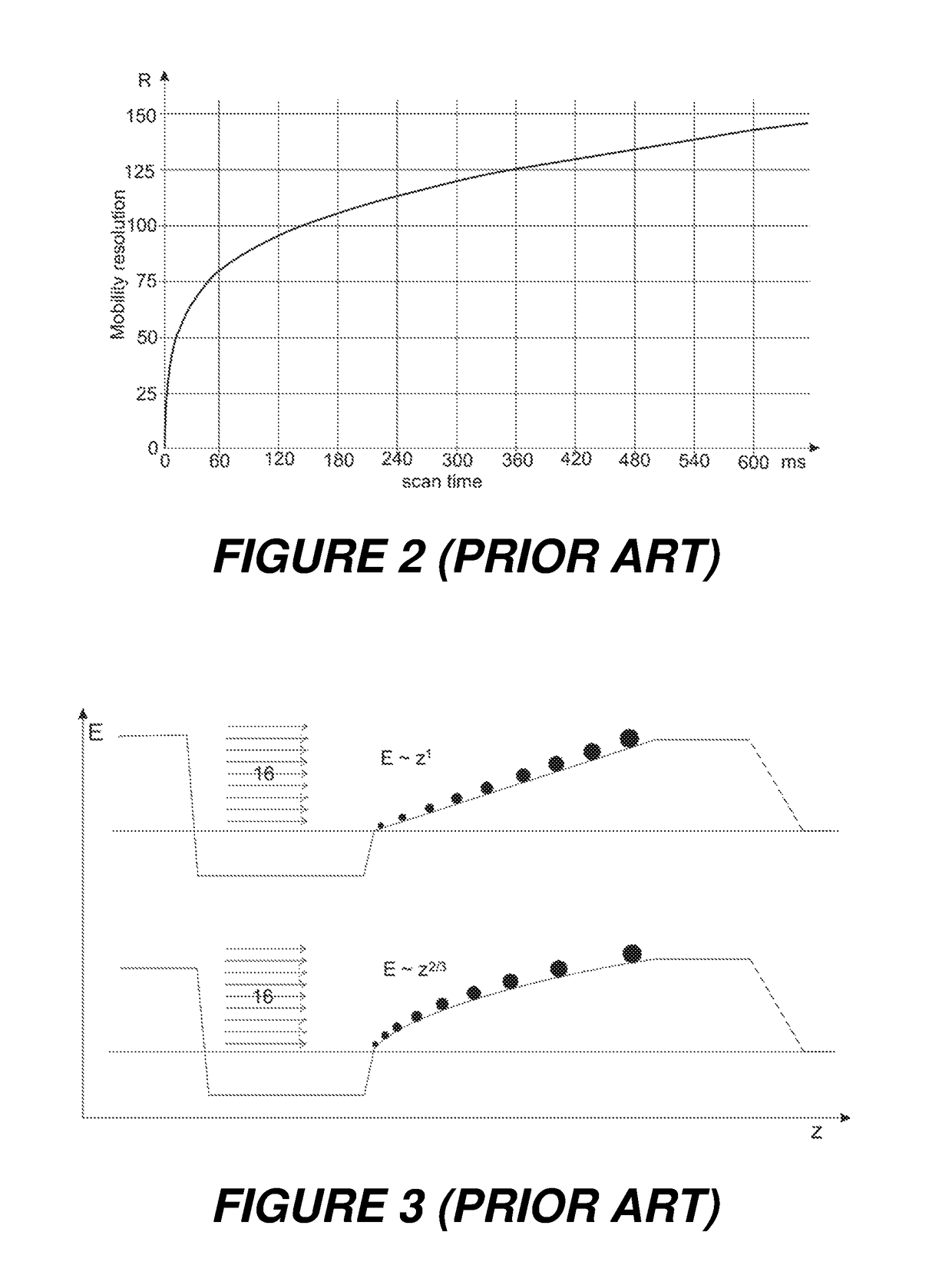Spatial zoom mode for accumulative trapped ion mobility spectrometry
a technology of accumulative trapped ions and spatial zoom, which is applied in the direction of mass spectrometers, instruments, stability-of-path spectrometers, etc., can solve the problems of high-mass ions being piled out of the tunnel, ion loss, and inability to achieve temporal zoom mode with drift tubes, so as to reduce the effect of space charge effects
- Summary
- Abstract
- Description
- Claims
- Application Information
AI Technical Summary
Benefits of technology
Problems solved by technology
Method used
Image
Examples
Embodiment Construction
[0037]The invention is based upon the ion mobility spectrometer (“TIMS”) presented in U.S. Pat. No. 7,838,826 B1, and particularly to the TIMS device with parallel accumulation as described in U.S. Ser. No. 14 / 614,456 and equipped with ion accumulation tunnel and ion mobility scanning tunnel.
[0038]As shown in the lower portion of FIG. 6, the invention involves applying additional voltages to the electrodes (61) and (62) near the ends of the TIMS ion mobility separation tunnel (11) in order to generate a long and flat electric field ramp on which ions of an interesting range of mobilities only can be accumulated for the ion mobility scan. The flat field ramp is extended to almost the complete length of the tunnel, decompressing the density of the ion clouds and diminishing the effect of space charge. More ions can be collected on the flat ramp without severe losses, and the ions can then be measured with preselected ion mobility resolution by choosing the right scan speed.
[0039]Only ...
PUM
 Login to View More
Login to View More Abstract
Description
Claims
Application Information
 Login to View More
Login to View More - R&D
- Intellectual Property
- Life Sciences
- Materials
- Tech Scout
- Unparalleled Data Quality
- Higher Quality Content
- 60% Fewer Hallucinations
Browse by: Latest US Patents, China's latest patents, Technical Efficacy Thesaurus, Application Domain, Technology Topic, Popular Technical Reports.
© 2025 PatSnap. All rights reserved.Legal|Privacy policy|Modern Slavery Act Transparency Statement|Sitemap|About US| Contact US: help@patsnap.com



